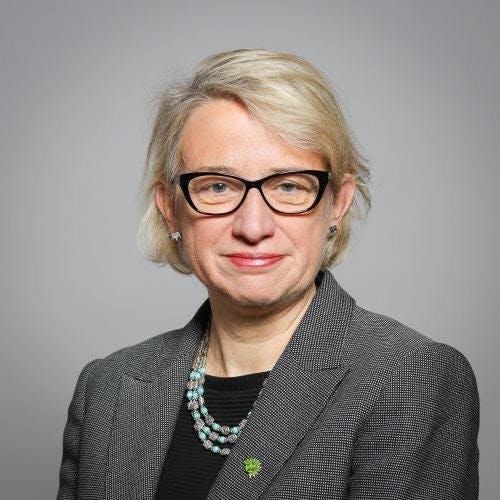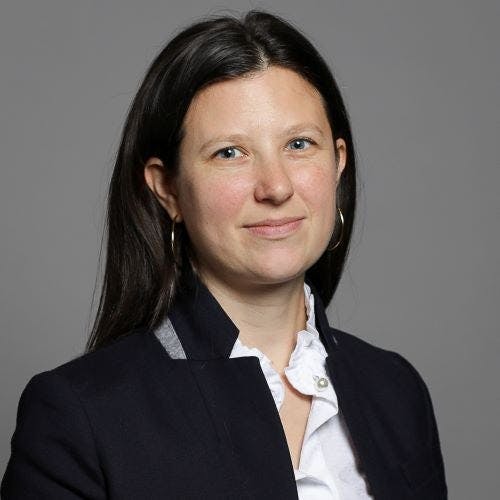Peers debate tax gap - VAT gap and profit shifting in the spotlight
Seven peers took part in a one hour debate in House of Lords Grand Committee (effectively the upper House’s equivalent to a Westminster Hall debate) on the tax gap, challenging the Government over the accuracy of tax gap figures and whether HMRC is sufficiently resourced to tackle it.
The Lords debate, held on Thursday 7 April, put the spotlight on HMRC’s report Measuring tax gaps 2021 edition - tax gap estimates for 2019 to 2020, published in September 2021 and updated in February. The tax gap is the difference between the amount of tax that should, in theory, be paid to HMRC, and what is actually paid. It is intended to help the public to understand the relative size and nature of tax non-compliance. The tax gap is £35 billion a year or about 5.2 per cent of the taxes that HMRC collects.
The one hour debate was obtained by Labour peer – and Professor of Accounting – Lord Sikka. In his speech opening the debate Sikka called on the Government to improve the analysis and presentation of the tax gap so that it links up with policy priorities and legal duties, rather than departmental headings.
Sikka said HMRC’s focus on tax returns will not help to estimate the tax gap because many individuals do not file them. The number of tax audits undertaken by HMRC is not really that high either, he argued, which means HMRC are extrapolating from a very small sample.
Alternatives to HMRC’s tax gap model estimate that the gap is somewhere between £58.6 billion and £122 billion a year, said Sikka. But even those models do not fully capture the leakage of tax revenues, he argued. He provided three examples of missing tax revenues not covered by existing tax gap estimates.
The first is through payments of dividends to shareholders and entities in low or no tax jurisdictions. The peer highlighted that social care, water, train and many other companies make use of this technique. The second is through use of related-party transactions, such as through sale and leaseback of properties. The third is profit shifting through intragroup transactions. Sikka complained that HMRC have ‘absolutely no idea’ of the taxes lost due to profit shifting and there is no estimate provided in the tax gap figures.
Dealing with the tax gap is very labour intensive and investigating just one company such as Google can tie down between 10 and 30 people for up to 22 months on average, Sikka said. With concern, he told peers that, in 2021, HMRC concluded 437 criminal investigations, compared to 864 the year before. Fraud investigations have also declined. In 2005, HMRC’s staff was 105,000 but most recently it was just under 62,000.
Turning to the subject of tax avoidance, Sikka claimed that not a single accounting firm whose avoidance schemes have been judged to be unlawful has ever been investigated, prosecuted or fined by the Government.
Lord Leigh of Hurley, Conservative, said HMRC do not seem to have confidence in its own tax gap figures because they are revised so frequently. He focused his remarks on the VAT tax gap, saying that his interest in this area stemmed from learning about the work undertaken by vatfraud.org and RAVAS—Retailers Against VAT Abuse Schemes. He criticised HMRC for being ‘in complete denial’ for many years about, first, abuse of low value consignment relief using the Channel Islands, and then VAT evasion by online offshore retailers.
Praising the work of Richard Allen of RAVAS Leigh said that there are many more opportunities to close the tax and VAT gap, but “we must listen to the people on the ground who are good enough to let us know of the problems”.
Leigh, who is a chartered tax adviser, said Allen had identified a current problem where, if a seller is in China or any other country and posts a package to the UK with no VAT added, as they have not registered for VAT as they should have done, HMRC are in reality ‘powerless ‘to collect the VAT due. The simple solution could, he said, be a VAT passport on all goods, via a QR code, which closes down a VAT gap that has yet to be quantified or recognised.
Leigh explained: “a QR code is essentially a VAT passport. A foreign seller will then have to prepay any VAT due and a bar code scan can easily inform HMRC of the exact details of the consignment. As every seller has a unique QR code, it will be easy to identify them and of course the recipient. As tax becomes digital it is up to us to embrace opportunities such as these.”
Lord Davies of Brixton, Labour, wondered if tax gap figures are just ‘a PR exercise’ because of the subjective definition of what HMRC say ‘should’ be collected. Davies supports the Commons Treasury Committee’s call for a strategic plan for reducing the tax gap. He is concerned that Making Tax Digital does not seem to have reduced the tax gap.
Davies also challenged the suggestion made sometimes by ministers that the UK tax gap is one of the smallest in the world. “Claims based on international comparisons of the tax gap are almost impossible, in general, but they are possible for VAT — the European Union did it — and there our record was not particularly good.” We were seventh in terms of the proportion, he said.
Baroness Bennett of Manor Castle, Green Party, (photographed below thanks to Parliament UK) claimed that the ‘enablers’ have escaped being investigated by HMRC, let alone prosecuted, for tax dodging and other issues. She suggested HMRC should be an independent agency of government, answerable to Parliament, because it would “remove the power of politicians to strike secret deals with corporations and individuals”.

Secondly, said Bennett, “we could entrench the anti-avoidance principle in UK tax law and oblige banks to provide information about companies automatically to HMRC.” She accused the Government of chasing “the poor, the disabled and the young… for the pennies they have not got, while failing to act against the people who are truly causing massive damage to our society.”
Baroness Kramer, Lib Dem Treasury spokesperson, said the tax gap is just a general estimate, and backed the Commons Public Accounts Committee call for sectoral tax gaps, ‘so at least we could try to tie it up with the underlying real economy’. She made a general point that HMRC issues tax claims with no actual calculations to show how the numbers are derived, such as to people affected by the Loan Charge.
Referring to her work on the Lords Economic Affairs Committee, Kramer complained about the unfairness of changes to off-payroll rules which have led to blanket rulings becoming common because companies do not want a fight with HMRC, so they simply decide to say that everyone is on payroll for tax. The Lib Dem claimed it is ‘incontrovertible’ that most major companies have managed to arrange deals with HMRC in which they pay very little [tax], compared to the revenues that they generate in the UK. Why do we not have the full amount of transfer pricing and base erosion included in the tax gap? she asked.
Kramer then turned to Making Tax Digital. “I have often heard HMRC say that it will close the tax gap. Everything is motivated by it. The Chartered Institute of Taxation is pretty sceptical about it. Lord Davies of Brixton gave us the numbers. It has not worked. One of my frustrations is that HMRC has insisted that, to make tax digital and to collect more of it, it must combine this with a change in the base period. All UK companies will now have to have a tax year-end between 31 March and 4 April, regardless of the seasonal patterns of their business. Little seasonal businesses, whose logical year-end is different, are now to be punished. The hospitality sector, farmers whose revenues depend on commodity prices and the weather, and retailers with seasonal goods, will have to guess at their future revenues for tax purposes. They will be hit very hard if they get it wrong. Making Tax Digital should have offered the possibility of flexibility and variation. Instead, simplification has been used to minimise the effort that HMRC needs to put into any of its activities. It is part of the failure to behave fairly to taxpayers.”
Kramer said she was angry that after COVID-19 struck, HMRC for six months stopped answering its fraud hotline and the online reporting form contained ‘so many intrusive and personal questions that many whistleblowers were too frightened to use it’. No wonder there is so much COVID-19-related fraud, she said.
Winding up for Labour, Lord Tunnicliffe, said concerns about HMRC’s ability to identify and tackle tax evasion and avoidance have existed for many years. HMRC lacks capacity and expertise, and the well-documented gaps have ‘not yet been sufficiently plugged’, he said.
Why has tackling coronavirus fraud been given just a quarter of the budget given to the DWP to combat fraud, even though the amounts lost to coronavirus-related fraud are higher, Tunnicliffe asked. With some HMRC staff being reallocated to the new Covid fraud task force, are there enough people left to adequately deal with day-to-day tax investigations, he wondered.
Summing up the debate, government whip Baroness Penn (photographed below thanks to Parliament UK) said there is a long-term downward trend in the tax gap, notwithstanding the slight increase in the past year. Revisions of the tax gap are evidence of HMRC’s commitment to transparency and the complexity of the calculations, she said, adding that HMRC’s VAT gap estimate, and the methodology, are robust and in line with international best practice.

In response to a question from Lord Tunnicliffe she said it was too soon to predict the impact of the pandemic on future tax gaps. However she noted that the VAT gap for 2020-21 has already been published and is 6.7 per cent down from 8.4 per cent in 19-20.
Answering Lord Sikka’s scepticism about the official tax gap figures she said HMRC do not agree with TaxWatch figures - which claim the ‘real VAT tax gap’ is about 23 billion euros - and she estimates that fraud and evasion account for 30 per cent of the tax gap. The tax gap estimates are official statistics produced in accordance with the Code of Practice for Statistics.
Officials are aware of the VAT passport proposal set out by in the debate by Lord Leigh and are considering it, alongside other proposals to tackle non-compliance, the minister told peers.
HMRC have secured more than £6 billion in extra tax from multinationals, thanks to the diverted profits tax introduced in 2015, said Penn. HMRC does include in the tax gap some forms of base erosion and profit shifting (BEPS) where it represents tax loss that we can address under UK law, but not BEPS arrangements that cannot be addressed under UK law, she explained. As new measures introduced in accordance with the BEPS project take effect, the Government’s ability will be greatly strengthened to address BEPS under domestic law, she said.
Concluding her speech, the minister said HMRC ‘does not do deals with anyone’ and that they think Making Tax Digital has been effective in helping to reduce the tax gap.
The full debate is here.
By Hamant Verma, CIOT Senior External Relations Officer
